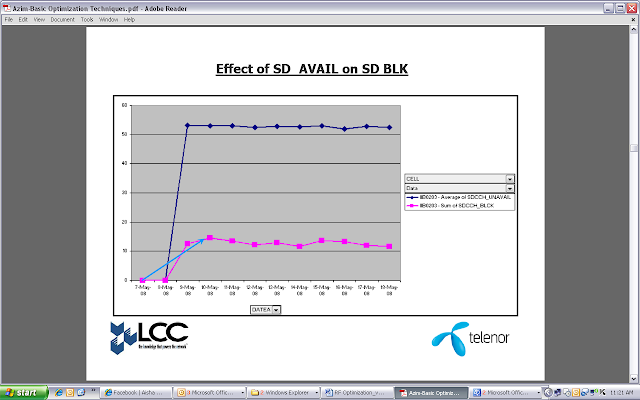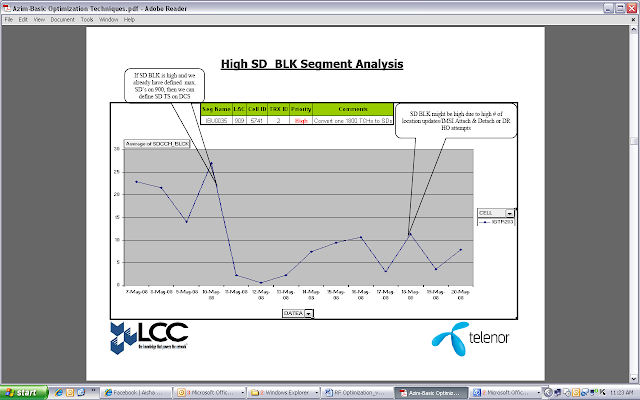This article is about KPIs Analyzing and Troubleshooting and focusing to the engineers, technicians and supervisors. You will find lot of documents related to this article. Just navigate our website www.paktechpoint.com and find more articles. Please! Do not forget to subscribe our Youtube channel also. Thanks
PAKTECHPOINT YOUTUBE CHANNEL SUBSCRIBE BY CLICKING
GSM KPIs Analyszing and Troubleshooting
Troubleshooting involves both problem analysis and rectification procedures. It is probably the most critical optimization procedure as it reflects how well the network is maintained. In this section, detailed troubleshooting techniques will be presented.
Troubleshooting can be divided into two broad categories:
– Statistical Troubleshooting
– Field Troubleshooting
Statistical Troubleshooting
Statistical Troubleshooting involves detailed analysis of degraded KPIs for all cells/BSCs mostly on the basis of BH statistics.
An RF Optimizer has to filter out cells with degraded KPIs on daily basis. Statistical troubleshooting procedures are discussed in detail in this section on the basis of “Issue Reported”. Following issues will be discussed with their respective reasons for degradation and solutions:
– Low CSSR
– High DCR
– Low HSR
– Low MPD
Low CSSR
FORMULA:
A generic formula for CSSR calculation is:
For increased SDCCH drops, first verify if some recent frequency changes are leading to poor RF environment; if not, raise the issue to BSS O&M via Service Desk.
Increased SDCCH drops will lead to increased SDCCH seizure attempts as user will make more attempts for making call while not being able to acquire TCH due to SDCCH drops. This phenomenon of increased SDCCH attempts may also lead to SDCCH blocking.
AFFECTING FACTORS:
Following could be the reasons for low CSSR:
I. Low SDCCH Access Rate (SDCCH Blocking)
II. Low SDCCH Seizure Success Rate (SDCCH Drops)
III. Low TCH Access Rate (TCH Raw Blocking)
IV. Low RACH Success Rate
RECTIFICATION PROCEDURES:
– Low SDCCH Access Rate (SDCCH Blocking)
– Check for SDCCH availability; if low, raise to BSS O&M via Service Desk
– Verify if SDCCH traffic has increased. If so, identify reason for increase in SDCCH traffic (voice calls, SMS, IMSI attach/detach, and Location Area Code (LAC) Updates). Traffic increase needs to be monitored for couple of days to ensure if the rise is consistent, and then a request is sent to Configuration Management (CM) team for SDCCH addition.
– However, for increase in SDCCH traffic due to LAC updates, the reason needs to be identified that caused increase in LAC updates. LAC definitions need to be verified both in BSC and MSC. If definitions are correct, raise the issue to BSS O&M via Service Desk.
– Low SDCCH Seizure Success Rate (SDCCH Drops)
For increased SDCCH drops, first verify if some recent frequency changes are leading to poor RF environment; if not, raise the issue to BSS O&M via Service Desk.
Increased SDCCH drops will lead to increased SDCCH seizure attempts as user will make more attempts for making call while not being able to acquire TCH due to SDCCH drops. This phenomenon of increased SDCCH attempts may also lead to SDCCH blocking.
– Low TCH Access Rate (TCH Raw Blocking)
– Check for TCH availability; if low, raise to BSS O&M via Service Desk
TCH_Avail vs. CSSR
– Enable Half Rate (HR) by sending request to CM team
– Use aggressive HR thresholds if HR is already enabled
– Send for TRX /band addition if parameter settings don’t work to counter blocking
– Traffic might be increased due to neighboring cell/site outage leading to increased traffic, thus blocking, on source cell. In this case, have the outage issue resolved by informing O&M via Service Desk
Erlang-B table might be referred for TCH allocation calculations as per traffic load.
Low RACH Success Rate
This could arise due to BISC clashes. The degradation could also mean faulty BCCH TRX; issue to be raised to O&M via Service Desk
Statistical Data for Troubleshooting Low CSSR:
Harmonized Stats Tool’ for xNokia Cells. ND Report: 166 contains comprehensive regarding SDCCH.



